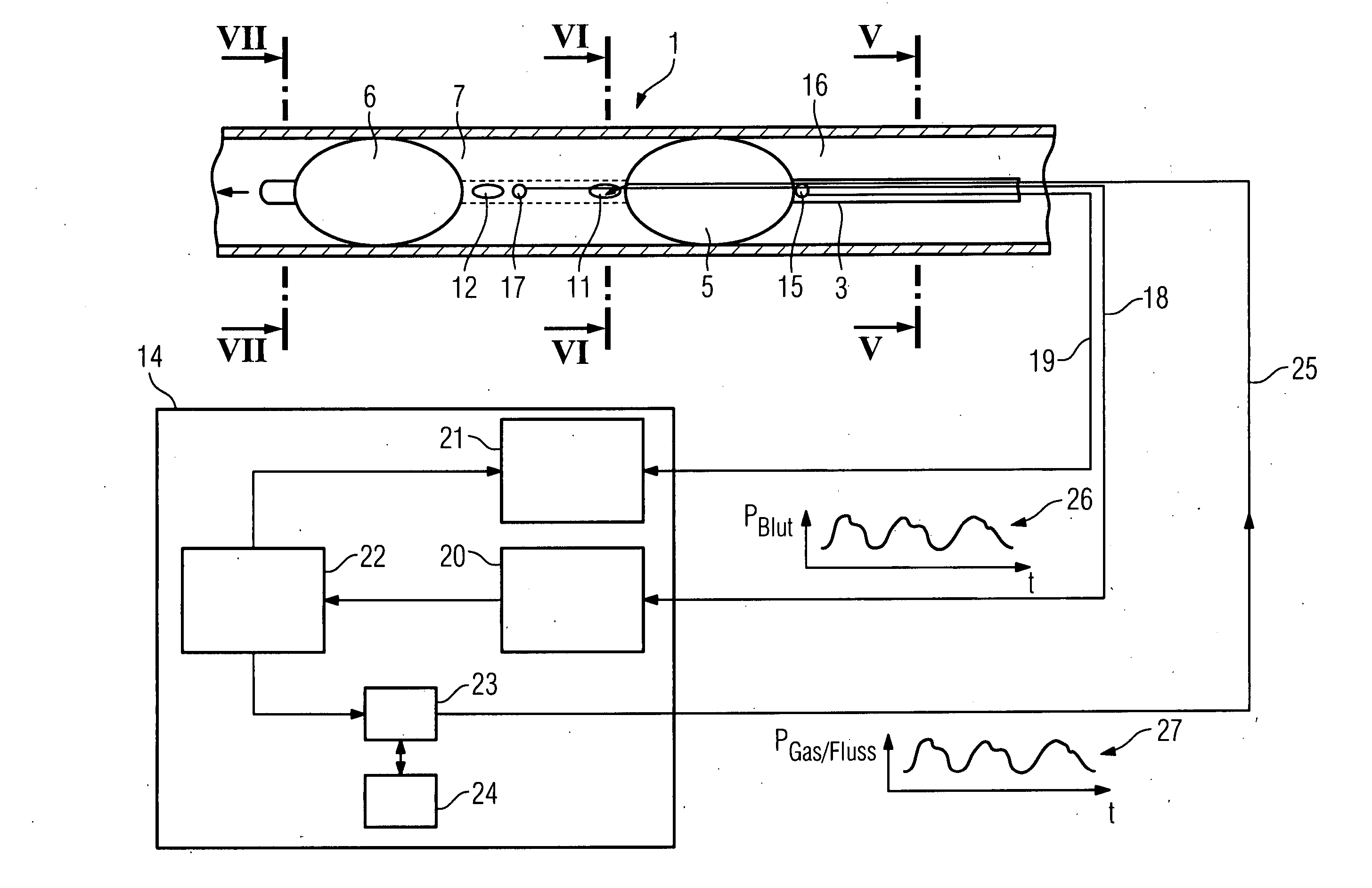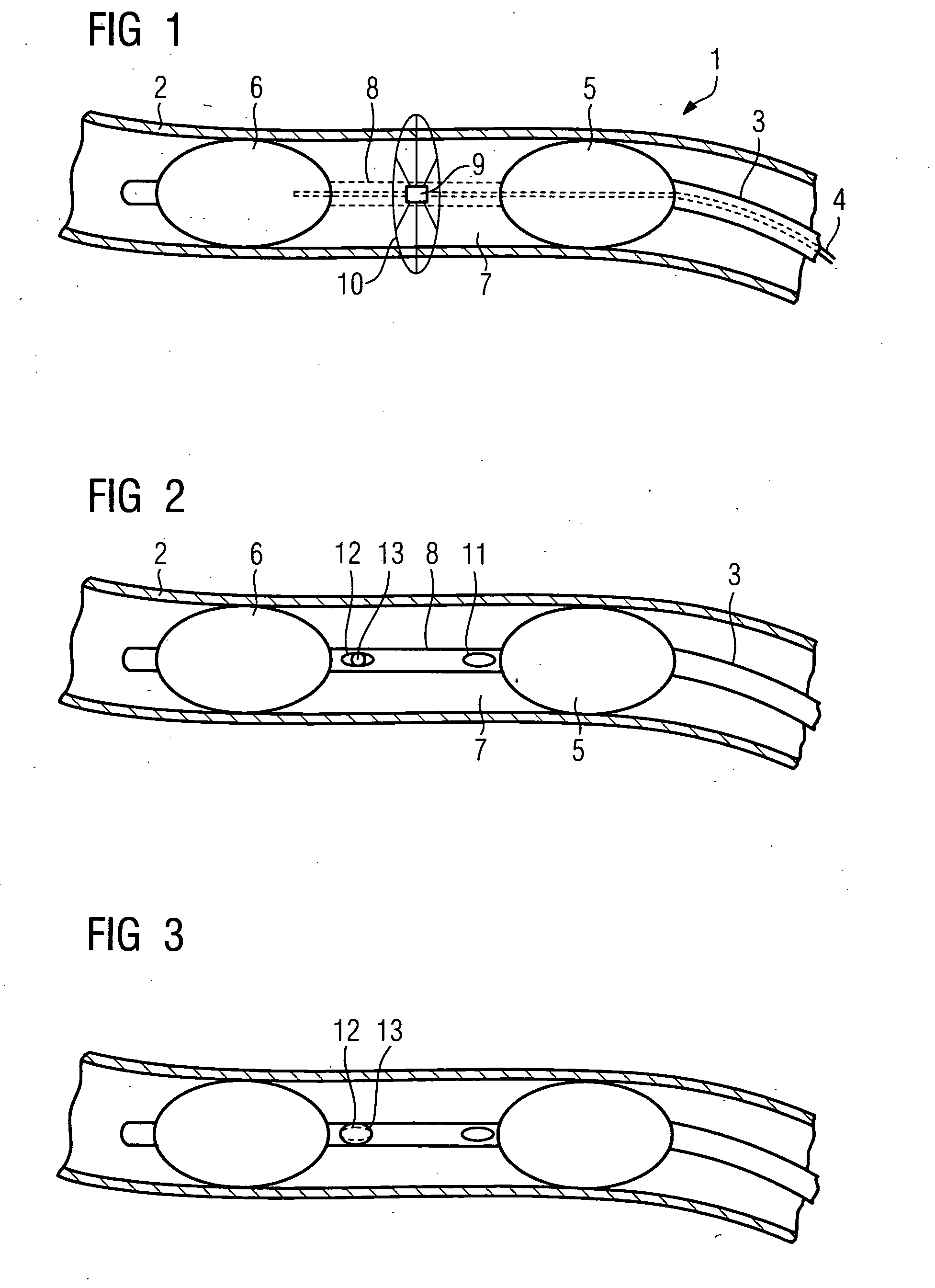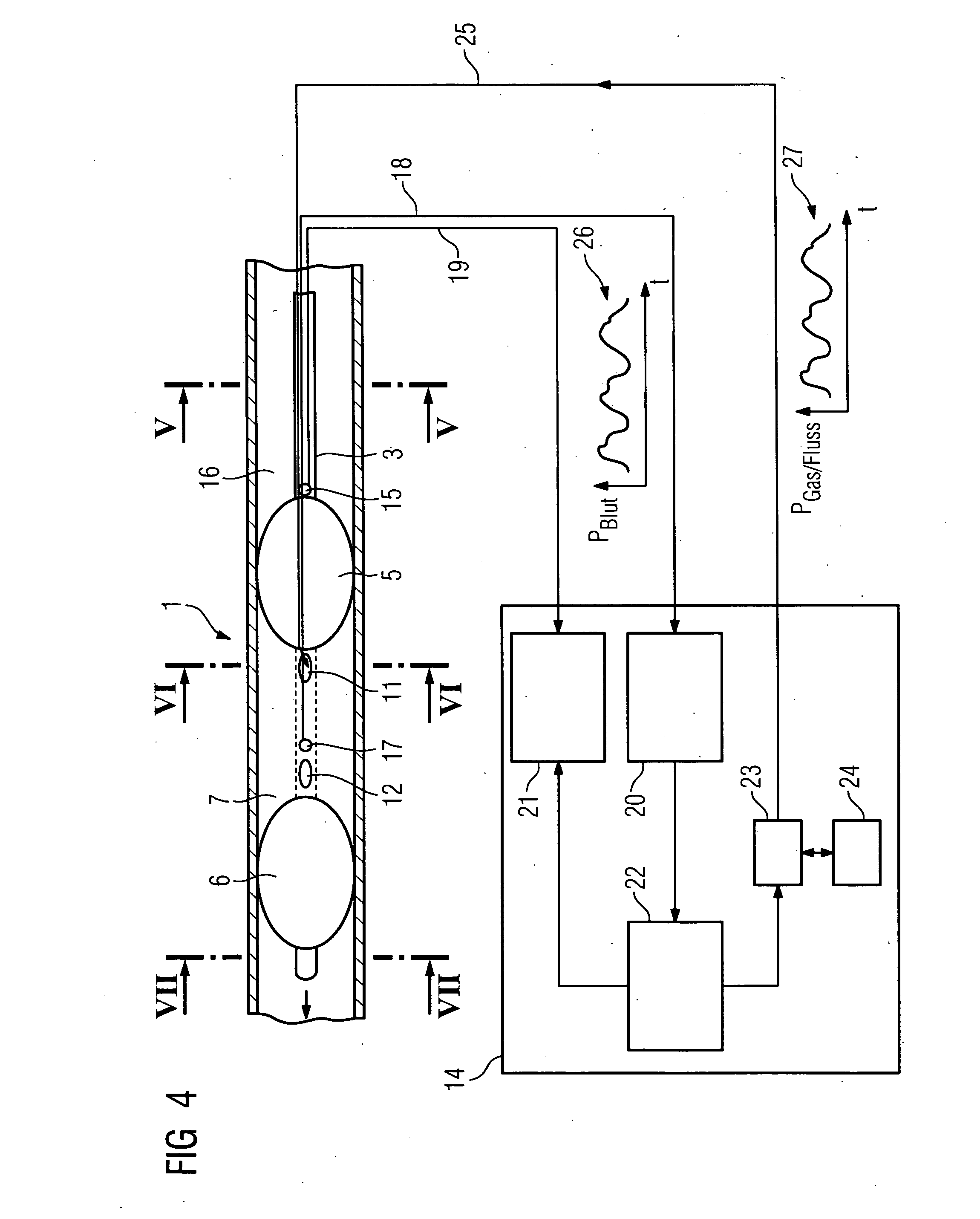Catheter device
- Summary
- Abstract
- Description
- Claims
- Application Information
AI Technical Summary
Benefits of technology
Problems solved by technology
Method used
Image
Examples
Embodiment Construction
[0026]FIG. 1 shows the inventive catheter device 1 which, in the example shown, is disposed inside a vessel 2. The catheter device 1 consists of a guide catheter 3, which has a lumen, in which an OCT catheter 4 is disposed in a longitudinally displaceable manner. The specific construction of the guide catheter 3 and the various lumina provided will be explained in greater detail below.
[0027] On the guide catheter 3 there is provided a first reversibly inflatable balloon 5, e.g. made of an elastic plastic material, which can be inflated with an inflation gas via a supply line (not shown in greater detail) from a collapsed shape to the inflated shape shown in FIG. I in which it bears against the vessel wall, sealing it off. Also shown is a second balloon 6 which is likewise inflatable via a supply line (not shown in further detail), which can be a separate supply line or the same supply line as that leading to the balloon 5, from a collapsed position in which it lies close to the gui...
PUM
 Login to View More
Login to View More Abstract
Description
Claims
Application Information
 Login to View More
Login to View More - R&D
- Intellectual Property
- Life Sciences
- Materials
- Tech Scout
- Unparalleled Data Quality
- Higher Quality Content
- 60% Fewer Hallucinations
Browse by: Latest US Patents, China's latest patents, Technical Efficacy Thesaurus, Application Domain, Technology Topic, Popular Technical Reports.
© 2025 PatSnap. All rights reserved.Legal|Privacy policy|Modern Slavery Act Transparency Statement|Sitemap|About US| Contact US: help@patsnap.com



